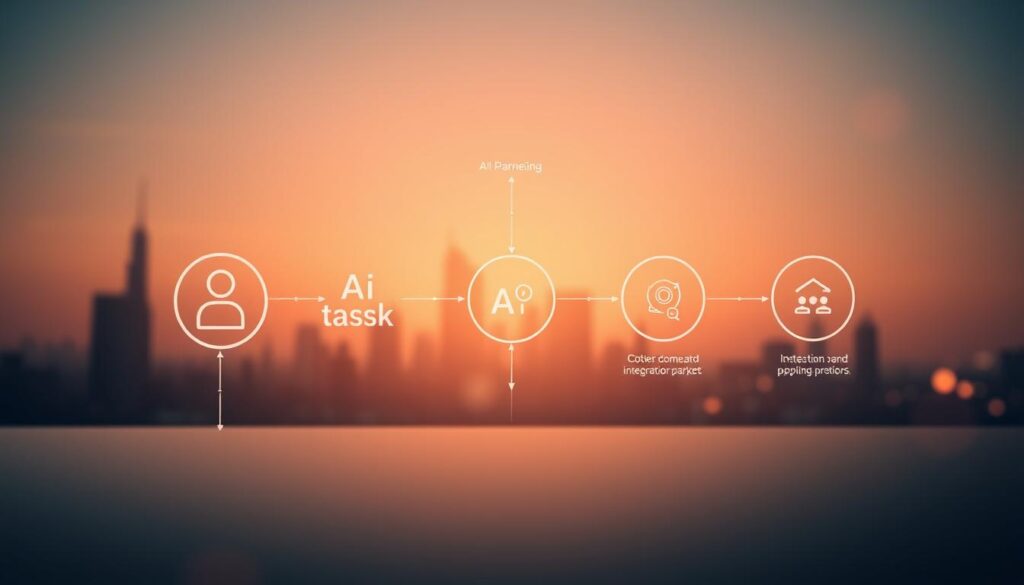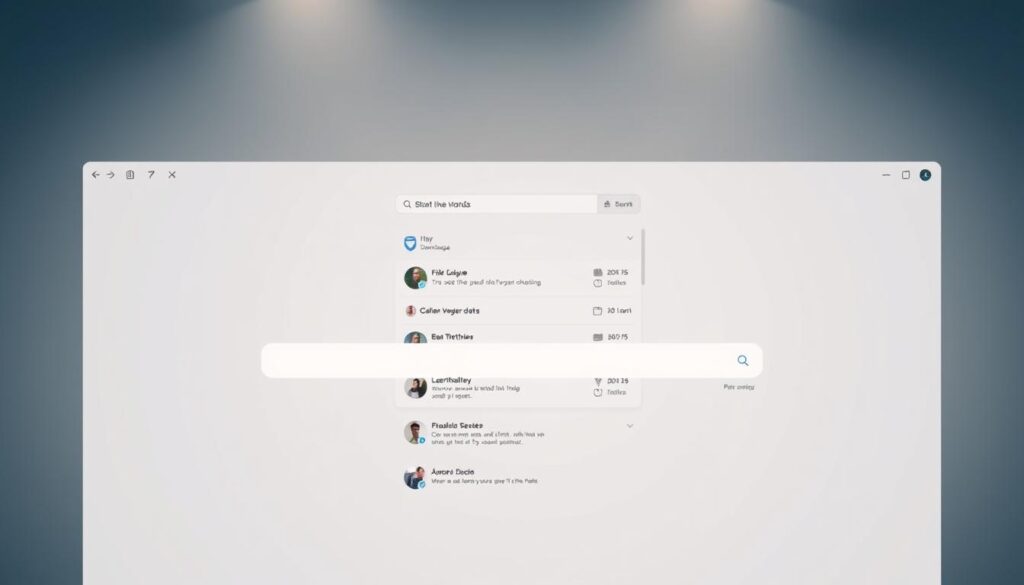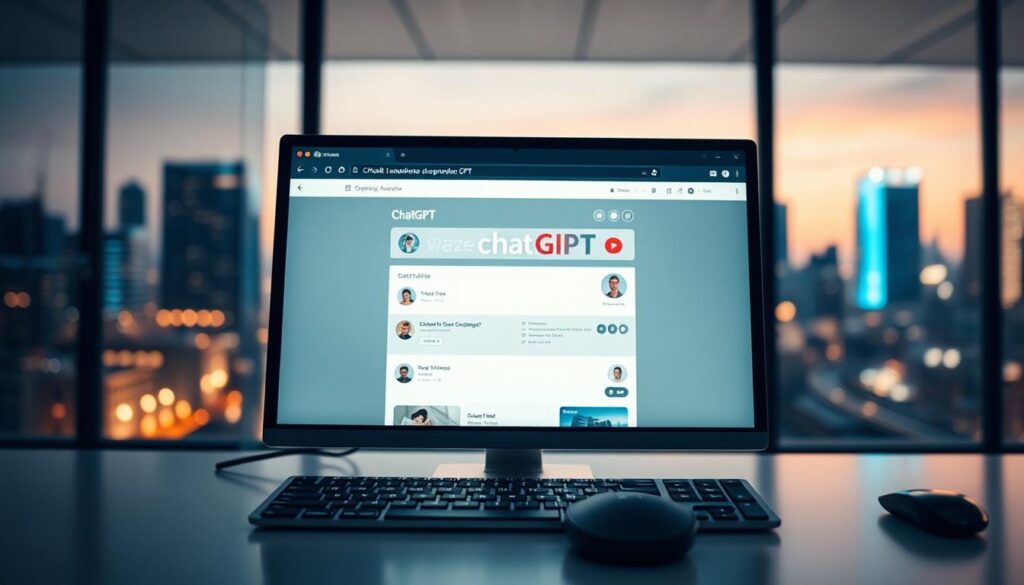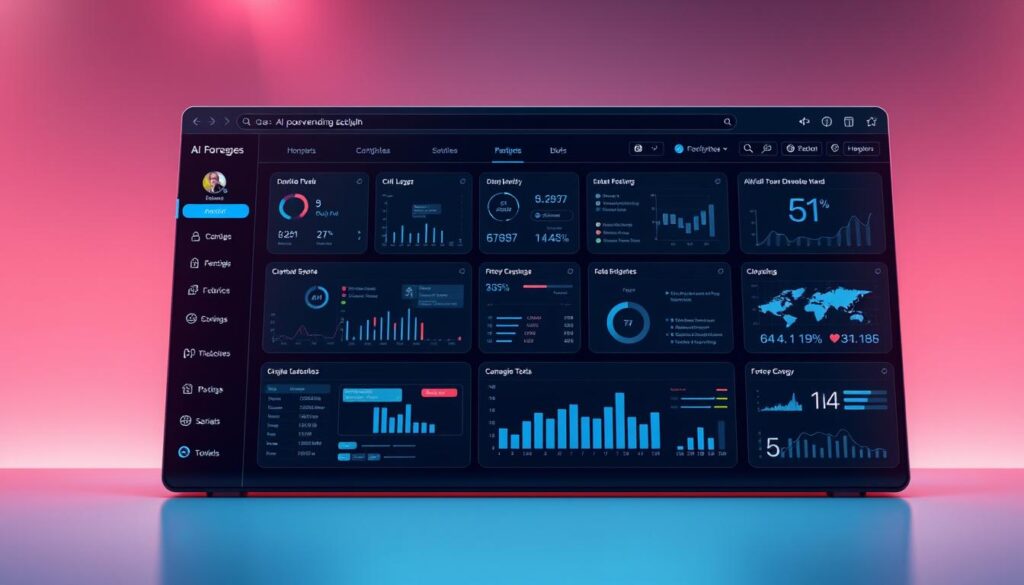Modern AI systems are redefining digital productivity through autonomous task execution. The latest innovation combines conversational interfaces with multi-platform operational capabilities, enabling users to streamline complex workflows. This technology represents a leap beyond traditional chatbots, offering integrated solutions for web navigation, data processing, and application management.
Three subscription tiers provide access to these advanced features, ranging from individual to team-oriented plans. The architecture operates through secure virtual environments, supporting both graphical and text-based interfaces. Users maintain full control through customizable permission settings while leveraging automated processes.
The system merges previous standalone tools into a unified platform, enhancing efficiency for technical and non-technical users alike. Its design emphasizes interoperability with existing software ecosystems while implementing enterprise-grade security measures. This approach positions the technology as a versatile solution for diverse organizational needs.
Key Takeaways
- Combines conversational AI with autonomous task execution across platforms
- Offers tiered subscription models for different user needs
- Operates through secure virtual environments with multiple interface options
- Integrates previous standalone tools into unified workflows
- Maintains user control through customizable security protocols
Introduction to the ChatGPT Agent and Its Capabilities

Advanced AI solutions now bridge conversational interfaces with practical task automation. These systems utilize specialized models trained through reinforcement learning to handle multi-step operations across digital platforms. From web navigation to spreadsheet creation, they execute workflows that previously demanded manual effort while maintaining contextual awareness.
Core Operational Framework
The technology combines logical reasoning capabilities with action-oriented execution. Users can delegate complex processes like form completion or code testing through natural language commands. A language excellence tool forms the foundation, enabling precise interpretation of user objectives across diverse software environments.
“Our system reduced weekly administrative work by 40% through automated scheduling and document generation.”
From Basic Interactions to Intelligent Automation
Early chatbot systems focused on single-turn conversations, but modern implementations demonstrate significant evolution:
| Feature | Traditional Systems | Advanced Implementations |
|---|---|---|
| Task Complexity | Single-step responses | Multi-platform workflows |
| Learning Method | Static rule sets | Adaptive reinforcement |
| Integration Scope | Limited APIs | Full ecosystem connectivity |
This progression enables handling of real-world scenarios like automated parking permit requests through coordinated email management and calendar updates. Security protocols ensure controlled access during these operations while preserving user oversight.
Mastering OpenAI ChatGPT Agent browser integration

Next-generation intelligent platforms optimize task execution through multi-interface browsing capabilities. These systems combine visual interaction tools with text-based processing engines, enabling dynamic adaptation to various digital challenges. Users experience enhanced workflow continuity through context-aware operations that persist across interruptions.
Core Interface Functionality
The dual-mode navigation system demonstrates remarkable flexibility in web operations. Visual interfaces handle complex interactions like form submissions, while text-based tools accelerate data extraction. This combination ensures optimal performance for both interactive tasks and information retrieval.
| Interface Type | Best Use Cases | Processing Speed |
|---|---|---|
| Visual Browser | Interactive forms, dynamic content | Moderate (human-like interaction) |
| Text Browser | Data scraping, API calls | High (machine-speed processing) |
“Our team reduced research time by 65% using the dual-browser approach for market analysis.”
Terminal access expands functionality beyond standard web operations, enabling direct code execution within secure environments. API connectors create bridges between web services and external platforms, facilitating automated data transfers. The system automatically selects optimal tools based on real-time task analysis, balancing speed and precision.
Users maintain oversight through adjustable permission settings and real-time intervention capabilities. This architecture supports complex workflows like automated report generation, combining web data collection with spreadsheet population. Continuous context preservation allows mid-process adjustments without workflow restart requirements.
Setting Up Your ChatGPT Agent for Browser Tasks

Proper configuration ensures optimal performance when leveraging automated workflows. Users begin by activating agent mode, which unlocks cross-platform automation features. This setup process balances operational flexibility with controlled access to connected services.
Activating Agent Mode via Tools Menu
Access the feature through the Tools dropdown or by typing /agent in the command line. Subscription tiers determine monthly message allowances:
- Pro tier: 400 automated actions
- Plus/Team tiers: 40 monthly operations
Higher-tier plans suit organizations requiring frequent data processing, while entry-level options accommodate individual users.
Initial Configuration and Permissions
The system requires explicit authorization for third-party app integration. During setup, users grant selective access to services like Gmail or GitHub through OAuth protocols. A language excellence tool ensures secure credential management while maintaining API connectivity.
“Granular permission settings reduced accidental data exposure by 78% in beta testing.”
Administrators can customize role-based access controls, limiting agent capabilities per user group. Real-time activity logs provide oversight without disrupting automated workflows.
Understanding the Integrated Tools and Interfaces

Modern workflow automation relies on specialized interfaces working in harmony. The system combines visual navigation with text processing and code execution, creating adaptable solutions for diverse tasks.
Visual and Text-Based Browsers Explained
The dual-interface system handles web interactions through two complementary methods. Visual tools manage dynamic elements like forms and buttons, while text processors extract structured information efficiently.
| Interface Type | Primary Function | Speed |
|---|---|---|
| Visual Processor | Interactive element handling | Human-paced |
| Text Processor | Bulk data extraction | Machine-speed |
This combination allows complex tasks like inventory tracking across multiple platforms. The visual component navigates vendor portals, while text tools compile pricing data automatically.
Terminal Access and API Connectors
Advanced users leverage direct code execution through secure terminals. Python environments enable real-time data analysis and file management without switching platforms.
“Automated API connections reduced our reporting time from hours to minutes.”
The system integrates with popular services through OAuth-secured connectors. This enables workflows like calendar-based AI design tools synchronization, where meeting agendas trigger automated slide deck creation.
Permission controls ensure safe data handling across all interfaces. Users maintain oversight through activity logs and customizable access levels.
Performing Practical Digital Tasks with ChatGPT Agent
Modern workflow automation solutions transform routine operations into strategic assets. These systems excel at managing multi-step processes that combine data analysis, content creation, and platform coordination.
Automating Meeting Summaries and Calendar Integrations
The system streamlines meeting preparation by analyzing Google Calendar entries and cross-referencing participant data. It automatically generates briefing documents with relevant news updates and historical discussion points. For post-meeting follow-ups, the tool compiles action items and schedules reminders through integrated platforms.
“Automated summaries reduced our executive prep time by 55% while improving meeting outcomes.”
Key features include:
- Real-time agenda adjustments based on attendee availability
- Automatic attachment of supporting documents to calendar invites
- Post-meeting task distribution via email and collaboration tools
Generating Reports and Slide Decks Efficiently
Complex slide deck creation becomes streamlined through competitive analysis and data synthesis. The automation platform processes financial metrics, market trends, and visual assets to produce presentation-ready materials. Users receive formatted documents with charts, speaker notes, and source citations.
Report generation capabilities extend to:
- Live data integration from APIs and web sources
- Customizable templates for legal summaries and market analyses
- Automatic version control with change tracking
For multi-day event planning, the system coordinates travel logistics and budget tracking while maintaining compliance standards. Productivity tools demonstrate particular effectiveness in industries requiring frequent regulatory reporting or rapid response to market shifts.
Navigating Third-Party App and Service Integrations
Enterprise productivity increasingly depends on interconnected software ecosystems. Modern automation platforms streamline operations through secure connections with essential business tools. This integration framework maintains strict data governance while enabling cross-platform workflows.
Connecting with Gmail, Google Calendar, and GitHub
The system employs OAuth 2.0 protocols for service authentication. Users grant granular access permissions through standardized authorization flows. This approach balances functionality with security, allowing specific data interactions without full account access.
| Service | Core Function | Security Protocol |
|---|---|---|
| Gmail | Email triage & response drafting | Limited scope API tokens |
| Google Calendar | Meeting coordination | Read/write separation |
| GitHub | Code review automation | Repository-specific access |
For email management, the platform summarizes unread messages and prioritizes urgent requests. Calendar integration syncs across multiple accounts, resolving scheduling conflicts automatically. Development teams benefit from GitHub synchronization that tracks pull requests and updates project boards.
“Automated calendar coordination saved our company 12 hours weekly in meeting logistics.”
API connections update in real-time, ensuring data consistency across platforms. Administrators configure access levels through centralized dashboards. This prevents unauthorized actions while maintaining workflow efficiency.
Best practices include:
- Regular permission audits for connected services
- Session timeout enforcement for inactive periods
- Encrypted data caching during multi-step processes
The system’s modular design allows simultaneous management of email threads, code repositories, and scheduling tasks. This interoperability transforms separate tools into cohesive operational environments.
Ensuring Security, Safeguards, and User Control
Robust security frameworks form the backbone of modern workflow automation systems. These multi-layered safeguards protect against evolving digital threats while maintaining operational efficiency. The architecture combines real-time monitoring with adaptive response protocols.
Defensive Architecture Essentials
Prompt injection protection neutralizes hidden commands in web content through pattern recognition algorithms. Watch Mode activates automatically for financial platforms, pausing operations if users navigate away. This ensures human oversight during sensitive transactions.
Session management protocols erase temporary data footprints after task completion. Users retain full control through one-click history deletion and customizable permission presets. Activity logs track all agent actions without storing personal information.
Privacy-Centric Design Principles
The system prevents unauthorized data retention through encrypted memory buffers. Authentication models require explicit approval for irreversible actions like file deletions. Real-time phishing detection scans external links during web interactions.
For enhanced security, explore sign-in features that complement these safeguards. Enterprise deployments benefit from audit trails meeting SOC 2 compliance standards, ensuring accountability across automated workflows.







